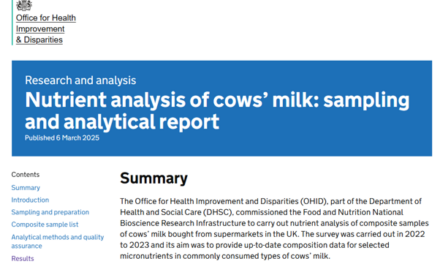Our Food and Nutrition experts explore the fibre, vitamins and nutrients found in apples
Whether you favour the sweet taste of a Gala or the sharpness of a Granny Smith, apples are a nutritious, versatile, and delicious addition to any diet. Packed with essential nutrients, they provide a natural and convenient way to support your overall health.
At the Food and Nutrition National Bioscience Research Infrastructure (FN-NBRI) in Norwich, we maintain the UK’s official food composition database, called the McCance and Widdowson’s The Composition of Foods Integrated Dataset. This comprehensive resource offers detailed nutritional data for over 3,000 foods commonly consumed across the UK, including apples.
Our UK food data, allows health professionals and consumers to make informed choices about what they eat.
Gathering data on the variety of apples we eat in the UK
Our dataset includes composite apple samples made up of sub-samples from various apple varieties including Gala, Braeburn, Golden Delicious, Pink Lady, Cox and Granny Smith.
To create each composite sample, we select apple varieties in proportions that reflect their market share and then blend them together. This means that our data reflects the variety of apples we eat in the UK.
This composite sample is then analysed for its nutrient content. This approach ensures a reliable average nutrient profile that represents the different apple varieties.
Along with analysing a range of varieties of apples, we also look at apples prepared in different ways. As well as analysing raw apples, we look at how the nutrition of apples changes when peeled, baked, stewed and dried. This means we can see how different ways of preparing apples affects their nutrition.
Apples are full of fibre
A medium-sized apple with the peel, on is a powerhouse of nutrition. Apples are an excellent source of dietary fibre, which supports digestive health, helps regulate blood sugar levels, and keeps you feeling fuller for longer.
Fibre is essential for maintaining a healthy gut microbiome.
Vitamins found in apples
Apples are also rich in vitamin C, a vital nutrient for boosting the immune system, promoting healthy skin, and improving iron absorption.
Both red and green apples are rich in beneficial nutrients, but each variety offers distinct health advantages. According to food composition data from the US and Australia we know that green apples, like Granny Smith, typically contain higher levels of vitamin C and dietary fibre, supporting immune function and digestive health.
Meanwhile, red apples are richer in beta-carotene and vitamin A, nutrients essential for healthy vision, skin, and immune system function. These compounds also give red apples their vibrant colour.
Exploring the bioactive compounds in apples
At FN-NBRI, we also host the FoodBioactiveDB, a comprehensive database containing information on bioactive compounds found in a wide variety of foods. Bioactive compounds are defined as inherent non-nutrient constituents of food plants and edible mushrooms with anticipated health promoting/beneficial and/or toxic effects when ingested.
With over 12,000 records across 170 different foods, our the database provides valuable insights into the health-promoting compounds present in apples and other fruits.
Based on existing data in FoodBioactiveDB, red apples are particularly rich in certain bioactive compounds, such as anthocyanins and flavonoids, which contribute to their antioxidant properties. These compounds help to fight oxidative stress and protect the body from damage caused by free radicals.
Meanwhile, green apples are higher in non-extractable proanthocyanidins, compounds with potential health benefits, particularly in relation to gastrointestinal health.
Apples many health benefits
Whether red or green, apples are packed with fibre, vitamins, antioxidants, and bioactive compounds that support health in unique and complementary ways.
Here at the Quadram Institute in the FN NBRI team, we are constantly updating our UK food composition data and adding new foods to our database, so that we can better understand how food impacts our health.
- Read more about apples on our Apple Facts page











